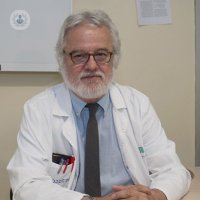Basic questions about COPD
Written by:What is COPD?
COPD stands for Chronic Obstructive Pulmonary Disease, and its hallmark is a spirometry that detects an obstruction to airflow; however, this is a functional datum of the lung and as such is due to numerous causes, among which the most important is tobacco, although other agents that penetrate into bronchi and alveoli can cause inflammation and distortion of the pulmonary architecture that leads to obstruction mentioned as toxic inhalants in the work environment, chronic infections with scarring capacity such as tuberculosis, aspirations already direct, when swallowing, or indirect as gastroesophageal reflux, or allergens with continued exposure. Several causes may coincide in a patient with COPD.
What types of COPD can we differentiate?
According to the distortion of the bronchial and lung architecture caused by chronic inflammation, it can be observed: emphysema type, which affects more the distal part, alveoli, or bronchitis type that affects more the bronchial wall; then there are intermediate types with characteristics of emphysema and bronchitis. If we are guided by the clinic there are types that expectorate and others that do not, there are patients who have a strong bronchospastic component and others who do not, and finally COPD, who often reagudize -2 or more episodes a year- and others who do not.

Where do we find the causes of COPD?
Tobacco, chronic infections in the lower airway, continued toxic inhalants, allergens. Mix of several of those cited.
What are your symptoms?
Dyspnea of effort, chronic cough and expectoration, in that order, that is to say, that dyspnea of effort that is also progressive, universal, not so cough or expectoration.
How is this disease treated?
Avoiding the agent linked to chronic inflammation such as tobacco or work agents to stop the deterioration of lung function and treat three points: permanent bronchodilation with either beta-adrenergic or antimuscarinic, permanent or occasional infection and in many cases the underlying inflammation that is sometimes similar to asthma and therefore susceptible to long-term inhaled corticosteroids or macrolides. Sometimes, when the oxygen pressure is low, you need an extra supply during the 8 hours of sleep or 16 hours a day. Respiratory muscle rehabilitation is convenient in advanced COPD and when the bronchitis component is predominant to help expectorate more effectively.


